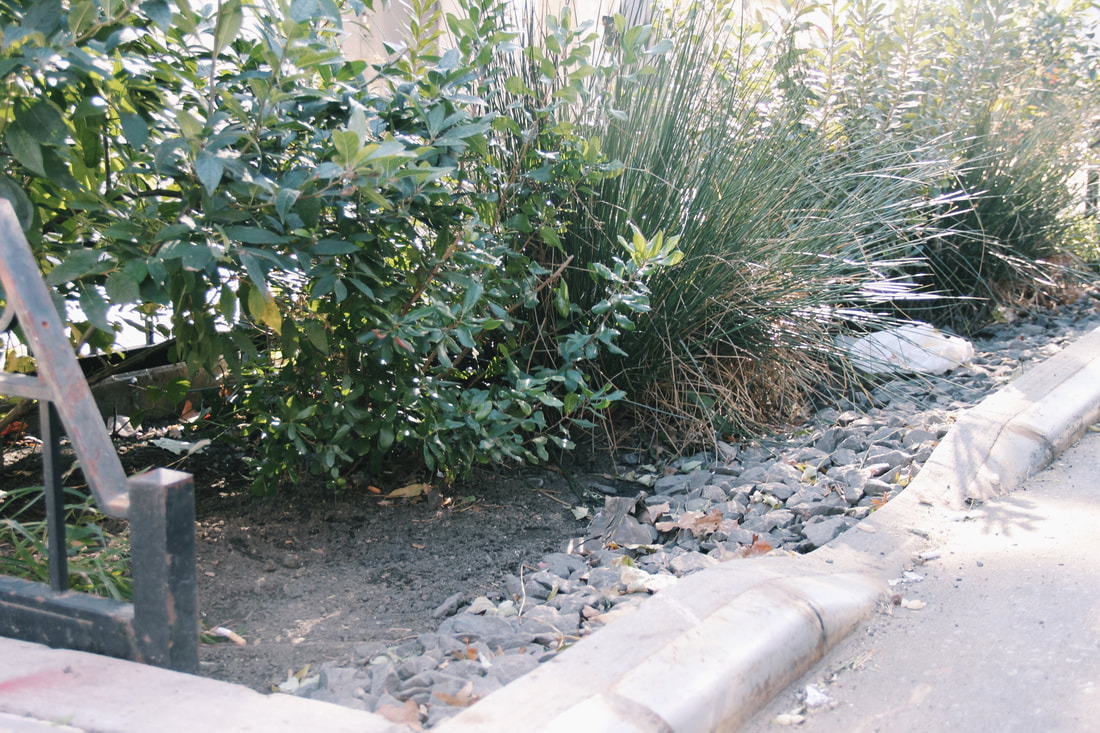 Slow water, spread water, sink water: a roadside bioswale (Photo by Camilla Ruiz, CC license below)
Slow water, spread water, sink water: a roadside bioswale (Photo by Camilla Ruiz, CC license below) Some of our new members are building bioswales, others want to learn how to build bioswales. We are looking for opportunities to experiment and play with this “landscape element,” which Wikipedia defines like so:
“Bioswales are landscape elements designed to concentrate or remove debris and pollution out of surface runoff water. They consist of a swaled drainage course with gently sloped sides (less than six percent) and filled with vegetation, compost and/or riprap . . . The water's flow path, along with the wide and shallow ditch, is designed to maximize the time water spends in the swale, which aids the collection and removal of pollutants, silt and debris. Bioswales are also beneficial in groundwater recharge and are great stormwater mitigation tools.” For inspiring photos, just Google bioswales and choose “images.”
One new member, Shawn Maestretti, posted a time-lapse video of building a bioswale in Altadena to the Beautiful Swales Facebook page. Thank you, Shawn. I watched and learned.
Another new member, Leigh Adams, will be teaching about swales, along with Shawn, at a rain water harvesting workshop at Tree People on Oct. 13.
Speaking of Leigh, she gave a tour of her lovely water-harvesting demonstration garden Crescent Farm to members of the Throop Learning Garden (including lucky me). We were all inspired. It is an education just walking around there. Make a point of visiting, next time you are at the L.A. Arboretum in Arcadia. Thank you, Leigh, and I look forward to seeing swale projects at Throop Learning Garden in the future.
If you are interested in learning, or teaching, about bioswales, I hope you will join us. Our next Beautiful Bioswales meeting will be Sept. 26, 6:30 p.m. at Sierra Madre City Hall, which has three new large swales.
And for some small scale hands-on experimentation, join us at Refurbishing the Native Plant Garden at the Jackie Robinson Post Office, Saturday, October 6, 8 a.m. to 11 a.m., 1355 N. Mentor Ave., Pasadena 91104
A final note: Swales work in all sizes. Making a decision about how big the swale should be is sometimes as simple as thinking: the bigger the water source, the bigger the swale. Swales slow water, spread water and sink water.
I look forward to seeing you and your shovel soon.
Signed,
Sylvia Holmes
The Swale Advocate
- - -
The photo used to illustrate this article has been licensed under a Creative Commons-Attribution-NonCommercial-NoDerivatives 4.0 International Public License.



